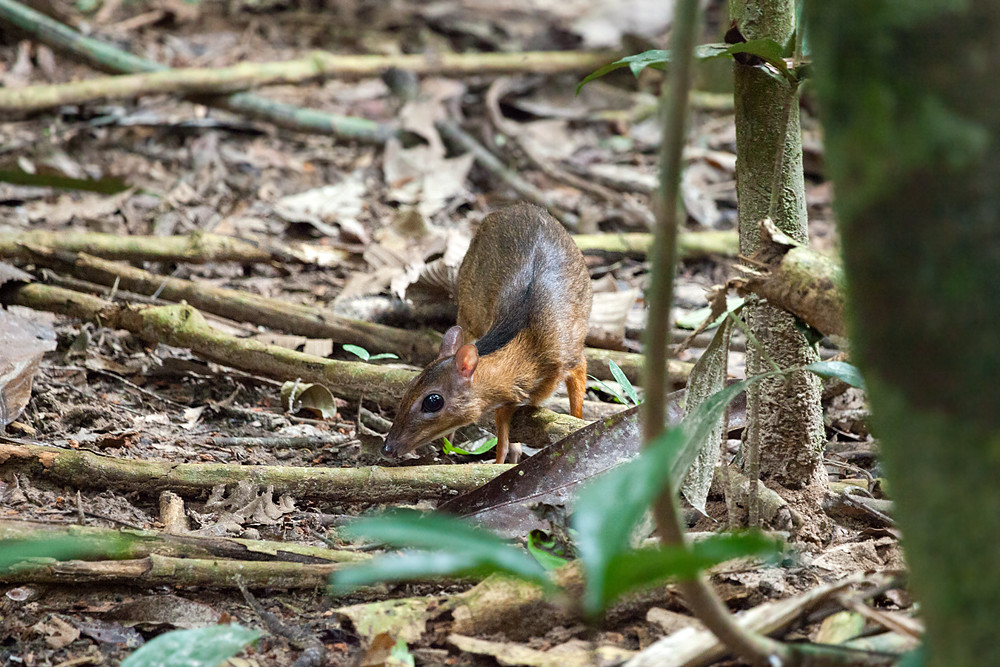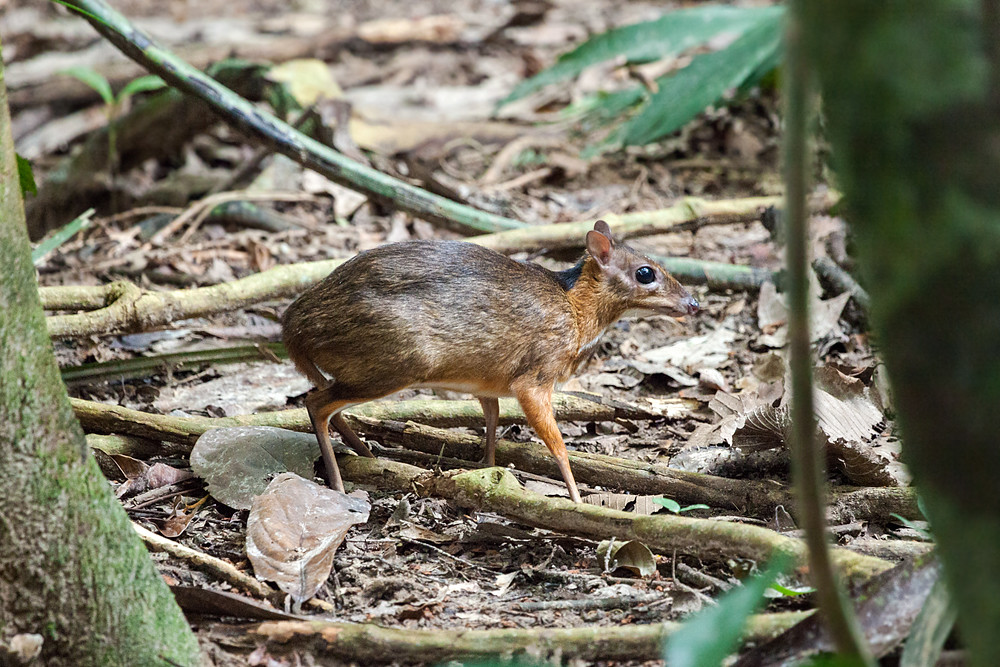Tragulus kanchil looks like a muntjac or deer but has no tear glands and horns. The whole body is covered with reddish-brown fur, with 3 white markings on the neck, and the underparts are pale. As an adult, it will have fangs that protrude from the edge. Males will have longer fangs than females, and beneath the chin, a swollen intra-mandibular gland is used for territorial marking and reproductive behaviour. Females also possess this gland, but it is much less swollen and difficult to discern in photographs. Slender limbs, with two main hooves and four toes on each foot.
 Lesser mouse-deer is the smallest ungulate in the world. It is the smallest ungulate in the Tragulidae family, with a body length of about 40-50cm, an average weight of 1.4-2.5 kg.
Lesser mouse-deer is the smallest ungulate in the world. It is the smallest ungulate in the Tragulidae family, with a body length of about 40-50cm, an average weight of 1.4-2.5 kg.
It is usually active in the early morning or late afternoon, sometimes at night. It lives on primary and secondary forest floors, feeding on leaves, shoots, fruits and sometimes fungi. The Lesser mouse-deer is a solitary species, pairing only during estrus. Females give birth to 1 offspring per year. This species is very shy. When it comes into contact with other species, it will jump and hide very quickly.
 The lesser mouse-deer is found widely across Southeast Asia in Indochina, Myanmar (Kra Isthmus), Brunei, Cambodia, China (Southern Yunnan), Indonesia (Kalimantan, Sumatra and many other small islands), Laos, Malaysia (Peninsular Malaysia, Sarawak and many other small islands), Singapore, Thailand, and Vietnam. However, the species’ numbers are currently declining due to habitat loss and illegal hunting.
The lesser mouse-deer is found widely across Southeast Asia in Indochina, Myanmar (Kra Isthmus), Brunei, Cambodia, China (Southern Yunnan), Indonesia (Kalimantan, Sumatra and many other small islands), Laos, Malaysia (Peninsular Malaysia, Sarawak and many other small islands), Singapore, Thailand, and Vietnam. However, the species’ numbers are currently declining due to habitat loss and illegal hunting.
According to Wikipedia, ecologyasia.com AND nparks.gov.sg













